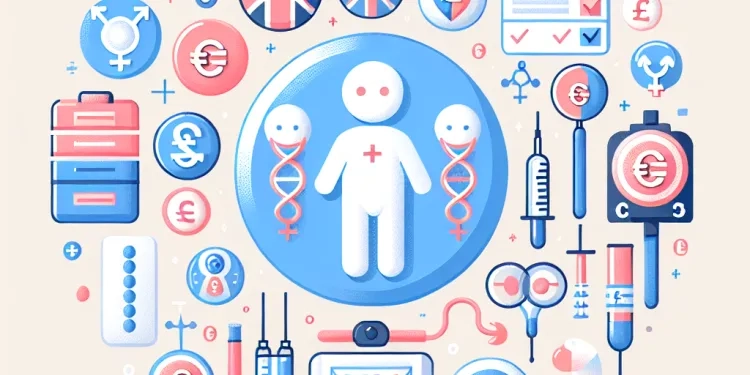
Find Help
More Items From Ergsy search
-

Can IVF be used for gender selection?
Relevance: 100%
-

Infertility - IVF Treatment and Patient Information
Relevance: 48%
-

What is IVF and how does it work?
Relevance: 44%
-

What is the role of the embryologist in IVF?
Relevance: 41%
-

How is the sperm used in IVF?
Relevance: 40%
-

Can IVF be done with donor eggs or sperm?
Relevance: 39%
-

What are the main steps in an IVF cycle?
Relevance: 39%
-

Who might need IVF?
Relevance: 37%
-
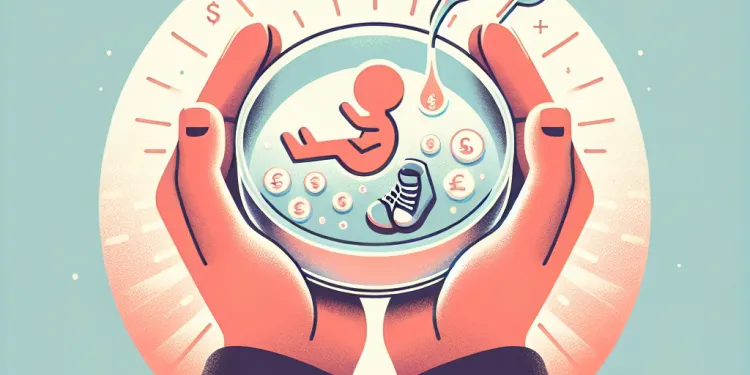
Is IVF successful?
Relevance: 37%
-
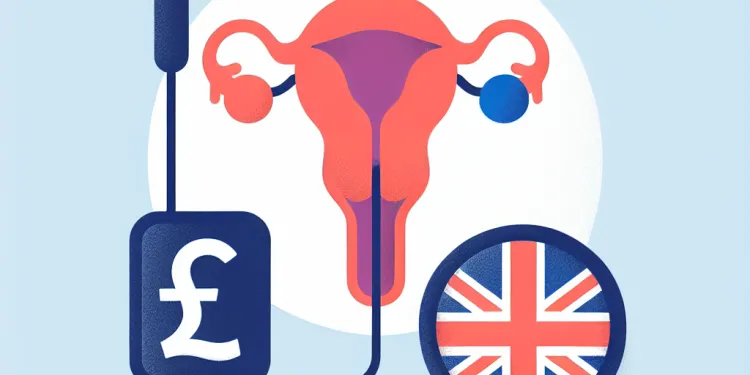
What is IVF?
Relevance: 37%
-

Does IVF guarantee pregnancy?
Relevance: 36%
-

How are embryos transferred during IVF?
Relevance: 36%
-

IVF Fertility Treatment from MumsNet
Relevance: 36%
-

Are there risks associated with IVF?
Relevance: 36%
-

What should I expect during IVF treatment?
Relevance: 34%
-

How does IVF work?
Relevance: 34%
-
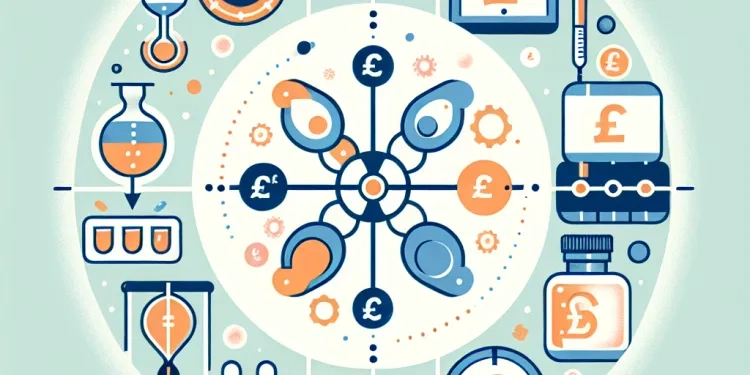
How long does an IVF cycle take?
Relevance: 34%
-

Does IVF require anesthesia?
Relevance: 33%
-

How is jury service selected?
Relevance: 32%
-

How do clinics determine if IVF is the right option?
Relevance: 32%
-

What happens during jury selection?
Relevance: 32%
-

How many embryos are usually transferred in IVF?
Relevance: 30%
-

How are Postcode Lottery winners selected?
Relevance: 25%
-

Selecting a Mortgage Broker - how they differ and what to watch out for
Relevance: 18%
-

How are school meal providers selected?
Relevance: 17%
-
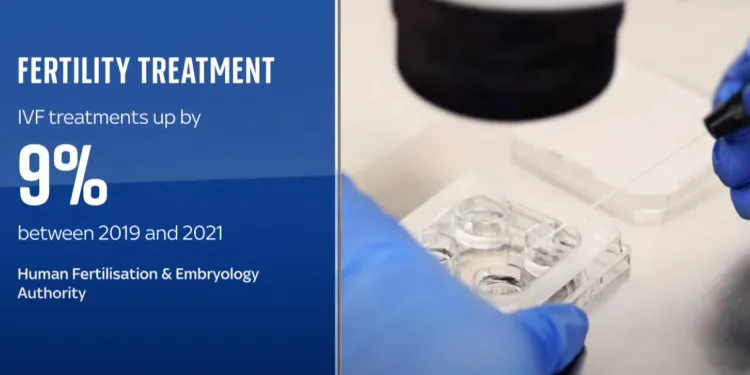
Fertility treatments on the up, but not via the NHS
Relevance: 14%
-

Is autism more common in boys or girls?
Relevance: 13%
-

Female infertility explained
Relevance: 12%
-

How to apply for NHS funding to treat infertility
Relevance: 11%
-

Can I volunteer for jury service?
Relevance: 10%
-

Who is at risk of developing chronic fatigue syndrome?
Relevance: 10%
-

Who can be a victim of honour based abuse?
Relevance: 10%
-

How are the topics for the HMRC Employer Bulletin chosen?
Relevance: 9%
-

Is ADHD more common in boys or girls?
Relevance: 9%
-

What is the role of a juror?
Relevance: 9%
-

What are risk factors for developing sleep apnea?
Relevance: 9%
-

Frequently asked questions about redundancy from ACAS
Relevance: 9%
-

What are the current statistics on childhood obesity in the UK?
Relevance: 9%
-

How can I find out my specific state pension age?
Relevance: 8%
-

Do I have to do Jury Service?
Relevance: 8%
Introduction to IVF and Gender Selection
In vitro fertilization (IVF) is a medical procedure used to assist with the conception of a child. This process involves fertilizing an egg with sperm outside the body, and once embryos are created, they are implanted into the uterus. A topic that often arises with IVF is its potential use for gender selection. In the UK, choosing the sex of a baby for non-medical reasons through IVF remains a controversial and highly regulated subject.
Understanding Gender Selection
Gender selection, also known as sex selection, involves choosing the sex of a child before conception or implantation. This can be achieved through preimplantation genetic testing (PGT), which assesses the chromosomes of embryos created through IVF. By examining the genetic material, it is possible to identify the sex chromosomes and thus select embryos of a desired gender for implantation.
Legal Framework in the UK
In the UK, gender selection for non-medical reasons is prohibited. The Human Fertilisation and Embryology Authority (HFEA), which regulates fertility treatments and research involving embryos, only permits gender selection to prevent sex-linked genetic disorders. This means that unless there's a significant risk of transmitting a serious gender-specific genetic condition, parents in the UK cannot choose their child’s sex.
Ethical Considerations
The ethical debate surrounding gender selection is multifaceted. Critics argue that allowing gender selection for non-medical reasons could lead to gender imbalances and reinforce gender stereotypes. On the other hand, some individuals support the idea for family balancing or personal preference. However, in the UK, ethical considerations have led to strict regulations to prevent non-medical gender selection through IVF.
Technological Developments
Despite the restrictions, technological advances in genetic testing and IVF procedures continue to evolve. PGT and other genetic testing methods are becoming more sophisticated, providing more detailed genetic information than ever before. While these advancements open possibilities for medical treatments and interventions, they also intensify discussions around their potential non-medical uses, such as gender selection.
Global Perspective
While the UK has strict regulations on this matter, other countries have different policies. For instance, some nations, like the United States, allow gender selection for non-medical reasons, although regulations vary by state. This discrepancy can lead those seeking gender selection to consider traveling abroad, an option known as ‘reproductive tourism’.
Conclusion
In the UK, using IVF for gender selection is highly regulated and restricted to medical necessities only. The ongoing conversation around the ethical and social implications of gender selection ensures that this remains a closely monitored issue. As IVF technology continues to advance, these discussions will likely continue to evolve, underlining the importance of balancing scientific progress with ethical responsibility.
Introduction to IVF and Choosing a Baby's Gender
In vitro fertilization, or IVF, is a medical way to help people have a baby. In this process, doctors join an egg and sperm together outside the body. Once the baby starts to grow, it is placed in the mother’s body. Some people talk about using IVF to choose if a baby will be a boy or a girl. In the UK, deciding a baby’s gender for non-health reasons with IVF is a serious and controlled topic.
Understanding Choosing a Baby's Gender
Choosing a baby's gender means picking if you want a boy or a girl before having the baby. This can happen by checking the baby’s genes during IVF. Doctors look at the baby’s chromosomes, which show if it will be a boy or a girl. Then, they can choose the baby that is the desired gender for the parents.
Rules in the UK
In the UK, parents cannot choose their baby's gender for non-health reasons. The Human Fertilisation and Embryology Authority, or HFEA, is in charge of these rules. They only allow choosing a baby's gender to avoid passing on serious health problems that are specific to boys or girls. Parents can’t choose their baby’s gender unless it's to prevent a genetic illness.
Thinking About What's Right and Wrong
Choosing a baby's gender raises important questions. Some people worry it could make gender stereotypes worse. Others think it's okay if it helps balance family life or personal wishes. In the UK, because of these concerns, there are strict rules that stop people from choosing a baby’s gender for non-health reasons using IVF.
New Technology
Even with rules, technology in genetic testing and IVF is getting better. These tests give more information about a baby’s genes. While this helps with medical treatments, it also raises questions about using it for non-health reasons, like choosing a baby's gender.
Looking at Other Countries
The UK has strict rules, but other countries have different ideas. For example, in some places like the United States, people can choose a baby's gender for non-health reasons, depending on where they live. Because of this, some people think about traveling to other countries for gender selection, which is called ‘reproductive tourism’.
Final Thoughts
In the UK, using IVF to choose a baby's gender is mostly for health reasons only. People continue to talk about what is right and wrong with choosing a baby’s gender. As we learn more and the science gets better, it is important to be careful and make sure we are being responsible with the choices we make.
Frequently Asked Questions
What is gender selection in IVF?
Gender selection, also known as sex selection, in IVF is a process where parents can choose the sex of their baby during the in vitro fertilization process.
Can IVF be used for gender selection?
Yes, IVF can be used for gender selection through a process called Preimplantation Genetic Testing (PGT).
What is Preimplantation Genetic Testing (PGT)?
PGT is a procedure that involves testing embryos for specific genetic markers or chromosomal normalcy, including determining the sex, before transferring them to the uterus.
Is gender selection legal everywhere?
No, the legality of gender selection varies by country. Some countries allow it, while others prohibit or heavily regulate it.
Why do people choose gender selection in IVF?
Reasons include family balancing, prevention of sex-linked genetic disorders, and personal preference.
How accurate is gender selection in IVF?
Gender selection through PGT is highly accurate, with success rates over 99% for selecting the desired sex.
Are there risks associated with IVF gender selection?
The primary risks are related to IVF itself, such as ovarian hyperstimulation syndrome and multiple births, not the gender selection process.
What are ethical concerns regarding gender selection?
Ethical concerns include potential gender bias, societal impacts, and the morality of choosing a child's sex for non-medical reasons.
Is there an additional cost for gender selection with IVF?
Yes, gender selection typically involves additional costs due to the need for PGT and specialized procedures.
Can gender selection prevent genetic diseases?
Yes, it can prevent sex-linked genetic diseases by selecting embryos of the sex not affected by the disorder.
Does gender selection guarantee a healthy baby?
No, while gender selection ensures the sex, it does not guarantee overall health, although PGT also screens for other genetic abnormalities.
Are there alternatives to IVF for gender selection?
IVF with PGT is the most reliable method, but some alternative methods lack scientific validation and are not recommended.
How long has gender selection in IVF been available?
Gender selection in IVF has been available since the 1990s, following the development of genetic testing technologies.
How do clinics ensure the privacy of gender selection choices?
Reputable clinics adhere to strict confidentiality protocols to protect patient privacy and decision-making.
What is the success rate for IVF without gender selection?
The success rate for IVF without gender selection varies but generally ranges from 40% to 50% in women under 35.
Can single parents opt for gender selection in IVF?
Yes, single parents can opt for gender selection if legal in their country and clinic policy permits.
Are there cultural factors influencing gender selection?
Yes, cultural preferences for sons or daughters can influence the choice, though this raises ethical questions.
What are the steps involved in gender selection in IVF?
The steps include ovarian stimulation, egg retrieval, fertilization, embryo biopsy for PGT, and embryo transfer.
How do patients qualify for IVF gender selection?
Qualification depends on medical criteria, individual circumstances, and legal regulations in the treatment location.
Is counseling recommended for those considering gender selection?
Yes, counseling is often recommended to discuss ethical, emotional, and societal implications of gender selection.
What is gender selection in IVF?
Gender selection in IVF is when parents choose if they want a baby boy or a baby girl.
IVF is a special way to help people have a baby. Doctors help the egg and sperm meet outside the body, and then the baby starts to grow.
Sometimes parents can pick if they want a son or a daughter, but this isn't always allowed everywhere.
Tools that can help you understand more:
- Ask a doctor questions.
- Watch videos for kids about how babies are made.
- Read books with pictures about babies and families.
Gender selection, or choosing a baby's sex, is when parents pick if they want a boy or a girl during IVF. IVF is a way to help parents have babies.
Can IVF help you choose a baby’s gender?
Yes, IVF can help choose a baby's gender. This is done with a special test called Preimplantation Genetic Testing (PGT).
What is Preimplantation Genetic Testing (PGT)?
Preimplantation Genetic Testing, or PGT, is a test done on embryos. An embryo is a very early stage of a baby before it is born.
This test checks if the embryo is healthy. It looks for any problems in the genes. Genes are like a set of instructions in our bodies that tell us how to grow and work.
Doctors use PGT to help choose the best embryos for IVF. IVF is a way to help people have babies.
If you want to learn more, you can ask your doctor. They can explain things in a way that is easy to understand.
Using pictures and videos can also help you learn more about PGT.
PGT is a special test for tiny babies, called embryos. This test checks if the embryos have healthy genes and shows if they are boys or girls. Doctors do this test before putting the embryos into the mother's tummy.
Can you choose a baby's gender everywhere?
No, you cannot choose a baby's gender everywhere. Some places say this is not allowed.
To understand better, you can:
- Ask a doctor for information.
- Read simple guides about baby gender choices.
- Use apps that explain things in simple ways.
Countries have different rules about picking a baby's gender. Some places say it's okay, but other places say you can't do it or have strict rules.
Why do people pick a baby's gender with IVF?
Some people use IVF to choose their baby's gender. This means they can pick if they want a boy or a girl.
Families might want a boy and a girl. Others might want their new baby to be the same gender as brothers or sisters.
IVF means doctors help make the baby in a special way. They check the baby to see if it is a boy or a girl.
Talking to a doctor can help families decide what is best for them. They can also use picture cards to help with choices.
There are a few reasons people might choose a certain baby gender. Some reasons are:
- Having a boy and a girl in the family.
- Stopping illnesses that come with a certain gender.
- Simply wanting a boy or a girl.
How well does choosing a baby's gender work in IVF?
When people choose if they want a baby boy or girl using PGT, it almost always works. It works more than 99 out of 100 times.
Is IVF gender selection safe?
When people try to have a baby using IVF, there are some risks. These are not because of choosing the baby’s gender.
The main risks are:
- The medicine can make the woman have too many eggs. This is called ovarian hyperstimulation syndrome.
- There might be more than one baby, like twins or triplets.
These are the risks from IVF.
Here are some ways you can get more help:
- Talk to your doctor. They can explain things clearly.
- Use pictures or videos. They can help you understand better.
- Ask someone you trust to help you read this.
What are the worries about choosing a baby's gender?
There are some worries about fairness. These worries are about treating boys and girls differently. People are also concerned about how it will affect our communities. It might not be right to choose if a baby is a boy or a girl just for reasons that are not about health.
Do you have to pay more money to choose a baby's gender with IVF?
Gender selection costs more money. This is because it uses special tests and procedures.
Can choosing a baby's gender stop genetic diseases?
Doctors might choose if a baby is a boy or a girl.
This can stop some health problems that run in families.
Talk to a doctor if you have questions.
Use simple words or drawings to help you understand better.
Yes, it can help stop some diseases that are passed down in families. This is done by choosing baby boys or girls who do not get sick from the disease.
Can choosing a baby's gender make sure the baby is healthy?
No, picking if a baby will be a boy or girl does not make sure the baby will be healthy.
It is important to eat healthy, go to the doctor, and take care of yourself.
Using a doctor and getting check-ups can help make sure the baby is healthy.
No, picking if a baby is a boy or girl doesn't make sure the baby is healthy. It can help check for some other health problems.
Other Ways to Choose a Baby's Gender Besides IVF
Are there different ways to pick if you have a boy or girl baby without using IVF? Here are some simple ways to do it:
- Timing Method: Some people try to have a boy or girl by picking special days to try for a baby.
- Old Wives' Tales: There are fun stories that say eating certain foods might help you have a boy or girl.
- Talk to Your Doctor: Doctors can help by telling you more ways to try.
IVF with PGT is the best way to see if a baby is healthy. Some other ways do not have enough proof that they work well, so they are not a good idea to use.
When did people start choosing a baby’s gender using IVF?
Choosing if a baby will be a boy or a girl with IVF has been possible since the 1990s. This happened because scientists found new ways to test genes.
How do clinics keep gender choice private?
Clinics keep your gender choice private. They have rules to keep your information safe. Here are ways they do it:
- They use special passwords on computers.
- Only certain people can see your information.
- They do not talk about your choices with others.
If you have trouble reading, ask someone you trust to help. You can also use text-to-speech tools to read the information out loud.
Good clinics keep your information private. This means they do not share your details with other people. This way, your personal choices are just for you.
How often does IVF work without choosing if the baby is a boy or girl?
If you are a woman under 35 years old, the chance of IVF success is usually between 40% and 50%.
Can single parents choose a baby boy or girl with IVF?
Yes, a single parent can choose the gender of their baby if it is allowed by the law in their country and by the rules of the clinic.
Do some cultures affect choosing boys or girls?
Yes, some people might want a boy or a girl because of their culture. But there are questions about whether this is right or wrong.
How do you choose a baby's gender with IVF?
Here is a simple way to understand the steps:
- Doctors take eggs and sperm: Doctors collect eggs from the mom and sperm from the dad.
- Make embryos: The sperm and eggs are put together to make tiny babies called embryos.
- Check the embryos: Doctors look at the embryos to see if they are a boy or a girl.
- Pick the gender: The parents can choose if they want to have a boy or a girl.
- Put the embryo back: The chosen embryo is put back into the mom to grow into a baby.
If you find reading hard, you can ask someone to read for you. You can also use apps that read text out loud. This can help you understand better.
The steps are:
1. Make the ovaries produce more eggs.
2. Take out the eggs.
3. Mix the eggs with sperm so they can join.
4. Check the tiny growing babies (embryos) to see how they are doing.
5. Put the embryo back inside the woman.
You might find it helpful to use large text or listen to audio recordings for better understanding.
How can people choose a baby's gender with IVF?
To qualify, you need to meet health rules and have certain things happening in your life. The laws where you get treatment also matter.
Should people thinking about choosing their baby's gender talk to a counselor?
If you want to pick if your baby is a boy or a girl, talking to a counselor can help.
A counselor listens to you and helps you understand your feelings.
They answer questions and give advice to help you decide.
Use pictures or videos to get more information. Talk to someone you trust, like a family member or friend, to get their support.
Yes, talking to a counselor can be a good idea. They can help you understand the right and wrong, how you feel, and what society thinks about choosing a baby's gender.
Useful Links
- Ergsy carfully checks the information in the videos we provide here.
- Videos shown by Youtube after a video has completed, have NOT been reviewed by ERGSY.
- To view, click the arrow in centre of video.
- Most of the videos you find here will have subtitles and/or closed captions available.
- You may need to turn these on, and choose your preferred language.
- Go to the video you'd like to watch.
- If closed captions (CC) are available, settings will be visible on the bottom right of the video player.
- To turn on Captions, click settings .
- To turn off Captions, click settings again.
More Items From Ergsy search
-

Can IVF be used for gender selection?
Relevance: 100%
-

Infertility - IVF Treatment and Patient Information
Relevance: 48%
-

What is IVF and how does it work?
Relevance: 44%
-

What is the role of the embryologist in IVF?
Relevance: 41%
-

How is the sperm used in IVF?
Relevance: 40%
-

Can IVF be done with donor eggs or sperm?
Relevance: 39%
-

What are the main steps in an IVF cycle?
Relevance: 39%
-

Who might need IVF?
Relevance: 37%
-

Is IVF successful?
Relevance: 37%
-

What is IVF?
Relevance: 37%
-

Does IVF guarantee pregnancy?
Relevance: 36%
-

How are embryos transferred during IVF?
Relevance: 36%
-

IVF Fertility Treatment from MumsNet
Relevance: 36%
-

Are there risks associated with IVF?
Relevance: 36%
-

What should I expect during IVF treatment?
Relevance: 34%
-

How does IVF work?
Relevance: 34%
-

How long does an IVF cycle take?
Relevance: 34%
-

Does IVF require anesthesia?
Relevance: 33%
-

How is jury service selected?
Relevance: 32%
-

How do clinics determine if IVF is the right option?
Relevance: 32%
-

What happens during jury selection?
Relevance: 32%
-

How many embryos are usually transferred in IVF?
Relevance: 30%
-

How are Postcode Lottery winners selected?
Relevance: 25%
-

Selecting a Mortgage Broker - how they differ and what to watch out for
Relevance: 18%
-

How are school meal providers selected?
Relevance: 17%
-

Fertility treatments on the up, but not via the NHS
Relevance: 14%
-

Is autism more common in boys or girls?
Relevance: 13%
-

Female infertility explained
Relevance: 12%
-

How to apply for NHS funding to treat infertility
Relevance: 11%
-

Can I volunteer for jury service?
Relevance: 10%
-

Who is at risk of developing chronic fatigue syndrome?
Relevance: 10%
-

Who can be a victim of honour based abuse?
Relevance: 10%
-

How are the topics for the HMRC Employer Bulletin chosen?
Relevance: 9%
-

Is ADHD more common in boys or girls?
Relevance: 9%
-

What is the role of a juror?
Relevance: 9%
-

What are risk factors for developing sleep apnea?
Relevance: 9%
-

Frequently asked questions about redundancy from ACAS
Relevance: 9%
-

What are the current statistics on childhood obesity in the UK?
Relevance: 9%
-

How can I find out my specific state pension age?
Relevance: 8%
-

Do I have to do Jury Service?
Relevance: 8%


